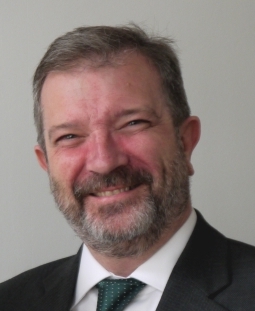EuroGeographics Secretary General and Executive Director, Mick Cory predicts what National Mapping, Cadastral and Land Registration Authorities can expect in 2020.
 The next decade promises continued, fast-paced, and pervasive change set against on-going international geopolitical, technological, environmental and economic uncertainty. Agility in responding to these challenges and opportunities will be crucial and in 2020, National Mapping, Cadastral and Land Registration Authorities (NMCAs) will continue to develop and adapt their activities to reaffirm their relevance, as well as the value of their information to society as a whole.
The next decade promises continued, fast-paced, and pervasive change set against on-going international geopolitical, technological, environmental and economic uncertainty. Agility in responding to these challenges and opportunities will be crucial and in 2020, National Mapping, Cadastral and Land Registration Authorities (NMCAs) will continue to develop and adapt their activities to reaffirm their relevance, as well as the value of their information to society as a whole.
Benchmarking their activities against wider policy objectives using the integrated geospatial information framework (IGIF) developed by the United Nations Expert Group on Global Geospatial Information Management (UN-GGIM) will provide a clear picture of where geospatial data generally, and that from NMCAs in particular, can add value. Furthermore, the UN 2030 Development Agenda presents an unrivalled opportunity to promote the tangible benefits of NMCA data and expertise. Cadastral information, registries and mapping databases are critical to enabling countries to report and monitor progress on achieving the Sustainable Development Goals (SDGs).
Issues such as climate change, sustainable development, migration and health do not stop at borders and require fully connected national databases for stronger cross-border emergency planning and environmental monitoring. As a result there will be a drive towards even greater collaboration and cooperation both within and beyond the geospatial sector to ensure an effective global response – with a clear role for trusted, reliable and detailed geospatial data from official national sources to help provide context and insight.
There is now the expectation that public sector information must be open. In Europe, the new Open Data Public Sector Information Directive, which is to be enacted by each European Union (EU) Member State within two years, identifies geospatial data as one of five ‘high-value’ data themes that warrant further regulatory action. At our 2019 General Assembly, members agreed to put data accessibility at the heart of our strategy. In 2020, they will be working to make appropriate pan-European datasets more widely available to meet international requirements under terms that are free for use and reuse consistent with this legislation.
Within the EU, the INSPIRE Directive provides the de facto basis for the European Spatial Data Infrastructure (SDI). It will be interesting to see its future direction now that the legal roadmap is coming to its end. NMCAs will take an active interest in how it relates to the IGIF and fundamental data themes identified by UN work. Recent experience has identified the need to address the technical complexity of the current specifications, and the need for Europe to address the diversity of business models, legal frameworks and lack of European policy lead and coordination on geospatial matters – all of which prove to be a challenge in developing effective pan-European use cases.
European space policy and space regulation will be another key area of interest for NMCAs in 2020, specifically pan-European data projects for satellite sensors to support lower resolution environmental applications. As resolution improves, we will see better spectral range, faster processing and more up-to-date information, although the market for this may be limited. There is also the major development of a new €16 billion space programme for 2021-2027 with the GSA developing into the European Agency for the Space Programme (EUSPA) with an expanded mandate to manage the market uptake and communications of the Copernicus Earth observation programme, and exploit synergies between Galileo and Copernicus.
Photogrammetry will remain a key data acquisition science and technology for NMCAs; its high resolution capability, and in particular the level of detail needed for cadastral surveys, is not currently matched by other technologies. With technological developments such as drones and other sensor and earth observation platforms, this is changing, but at this point in time, for example, a high-resolution Pan-European Digital Terrain Model (DTM) cannot be fully satisfied with satellite imagery alone since in forestry areas the imagery is not accurate for DTM purposes.
Classical photogrammetry and earth observation are converging. Many NMCAs already use general satellite imagery for detecting and monitoring change but will continue to watch the cross-over between airborne sensors and the usability of satellite imagery, particularly in rural areas. We also expect to see aerial LiDAR used more and more in a wide range of applications from high resolution Digital Surface Models (DSM) to detailed railway surveys. Whilst drones are not yet useful for national scale mapping, they have proved satisfactory for small urban areas, industrial zones or protected areas with higher density, resolution and frequency. Their real value will be proved by ensuring that data collected from them is simple and inexpensive to integrate with information from other sensors.
Trusted authoritative sources of spatial information are fundamental requirements of a modern state. As the national authorities for official geospatial reference data in Europe, our members’ role is to continue to capture an ever-changing landscape accurately for public purposes to provide certainty to citizens, governments and businesses. In 2020 and with increasing uncertainty in all areas of life, it will be more important than ever to communicate the value of authoritative data from NMCAs. We must spread the word and make sure the benefits are well understood beyond our own communities and coordinate our efforts to avoid duplication and better deliver on priority areas.
Working together, we can demonstrate the benefit of authoritative, trusted information and raise awareness among politicians and policymakers of our value in delivering better data for better lives.
